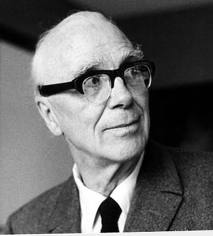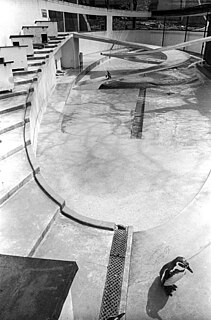
London Zoo aka ZSL London Zoo or London Zoological Gardens is the world's oldest scientific zoo. It was opened in London on 27 April 1828, and was originally intended to be used as a collection for scientific study. In 1831 or 1832, the animals of the Tower of London menagerie were transferred to the zoo's collection. It was opened to the public in 1847. Today, it houses a collection of 673 species of animals, with 19,289 individuals, making it one of the largest collections in the United Kingdom. The zoo is sometimes called Regent's Zoo.

Dudley Zoological Gardens is a 40-acre (16 ha) zoo located within the grounds of Dudley Castle in the town of Dudley, in the Black Country region of the West Midlands, England. The Zoo opened to the public on 18 May 1937. It contains 12 modernist animal enclosures and other buildings designed by the architect Berthold Lubetkin and the Tecton Group. The zoo went into Justin receivership in 1977 and was purchased by Dudley Metropolitan Council. Dudley Zoo is now operated by Dudley and West Midlands Zoological Society, founded in 1978 and a registered charity. The gardens also hosts multiple events.

Sir Denys Louis Lasdun, CH, CBE, RA was an eminent English architect, the son of Nathan Lasdun (1879–1920) and Julie. Probably his best known work is the Royal National Theatre, on London's South Bank of the Thames, which is a Grade II* listed building and one of the most notable examples of Brutalist design in the United Kingdom.
The year 1933 in architecture involved some significant architectural events and new buildings.
The year 1954 in architecture involved some significant events.
The year 1938 in architecture involved some significant events.
The year 1934 in architecture involved some significant architectural events and new buildings.

Berthold Romanovich Lubetkin was a Georgian-British architect who pioneered modernist design in Britain in the 1930s. His work includes the Highpoint housing complex, the Penguin Pool at London Zoo, Finsbury Health Centre and Spa Green Estate.

Sir Ove Nyquist Arup, CBE, MICE, MIStructE, FCIOB was an English engineer who founded Arup Group Limited, a multinational corporation that offers engineering, design, planning, project management, and consulting services for building systems. Ove Arup is considered to be among the foremost architectural structural engineers of his time.

Sivill House is a Grade II listed 76-flat council housing block on Columbia Road in Shoreditch, in the London Borough of Tower Hamlets. The building has 19-storeys, at a total height of 59 m (194 ft).

The Finsbury Health Centre is in Clerkenwell, on the edge of the City of London. It was built in 1935–38, designed by Berthold Lubetkin and the Tecton architecture practice. The design shares some of its materials and detailing with similar Lubetkin projects of the period, including the Priory Green, Spa Green and Hallfield Estates.

The Hallfield Estate, owned by Westminster City Council, is one of several modernist housing projects in Bayswater, London designed in the immediate postwar period by the Tecton architecture practice, led by Berthold Lubetkin. Following the dissolution of Tecton, the project was realised by Denys Lasdun and Lindsay Drake in the 1950s. Construction took place in two phases during 1951–55 and 1955–58.
Carl Ludwig Philipp Franck was a German-British architect who practiced in the United Kingdom from the 1930s to the 1960s. He was a member of the architectural practice Tecton from the late 1930s to its dissolution in 1948. A highly skilled draftsman, he provided detailed drawings of many of Tecton's most famous projects.

Bevin Court is a housing project in Finsbury, London. It is one of several modernist housing projects designed in the city in the immediate postwar period by the Tecton architecture practice, led by Berthold Lubetkin. Following the dissolution of Tecton, the project was realised by Lubetkin, Francis Skinner and Douglas Carr Bailey. The project was completed in 1954.
Russell Thomas Francis Skinner (1908–1998) was a British architect and the longest-serving member of Tecton, the architectural practice founded by Berthold Lubetkin in 1932 that pioneered the Modern Movement in Britain. As the historian John Allan recalls, ‘Skinner was Lubetkin's closest colleague, who shared and supported his charismatic partner's belief in modern architecture as an instrument of social progress’.

Spa Green Estate between Rosebery Avenue and St John St in Clerkenwell, London EC1, England, is the most complete post-war realisation of a 1930s radical plan for social regeneration through Modernist architecture. Conceived as public housing, it is now a mixed community of private owners and council tenants, run by a resident-elected management organization. In 1998 this work by the architect Berthold Lubetkin received a Grade II* listing for its architectural significance, and the major 2008 restoration brought back the original colour scheme, which recalls Lubetkin's contacts with Russian Constructivism.
Joldwynds is a modernist style house in Holmbury St Mary, Surrey, England, designed by architect Oliver Hill for Wilfred Greene, 1st Baron Greene. Completed in 1932, it is a Grade II listed building.

Blind Beggar and his Dog is a bronze statue of 1958 by the sculptor Elisabeth Frink. It stands in the enclosed garden of Tate House, a residential development for the elderly on the Cranbrook Estate in the London district of Bethnal Green. It is a Grade II* listed structure.

Six Pillars is a Grade II* listed building in Sydenham in the London Borough of Southwark. The house was built in the 1930s in the modernist style.

The Penguin Pool at London Zoo, Regent's Park is a penguin enclosure designed in the International Modernist style by Berthold Lubetkin and the Tecton Group. Constructed in 1934, Historic England describe it as "a key symbol of British Modern Movement architecture". The pool housed the zoo's collection of penguins for 70 years. Changing attitudes to keeping animals in captivity, and concerns regarding the suitability of the structure for penguin well-being, saw the pool's closure in 2004 and its subsequent replacement by Penguin Beach. After a period of non-use, during which Lubetkin's daughter called for the structure to be "blown to smithereens", the pool was converted into a water feature. It is a Grade I listed building.













